Short a – Book 1 of 5
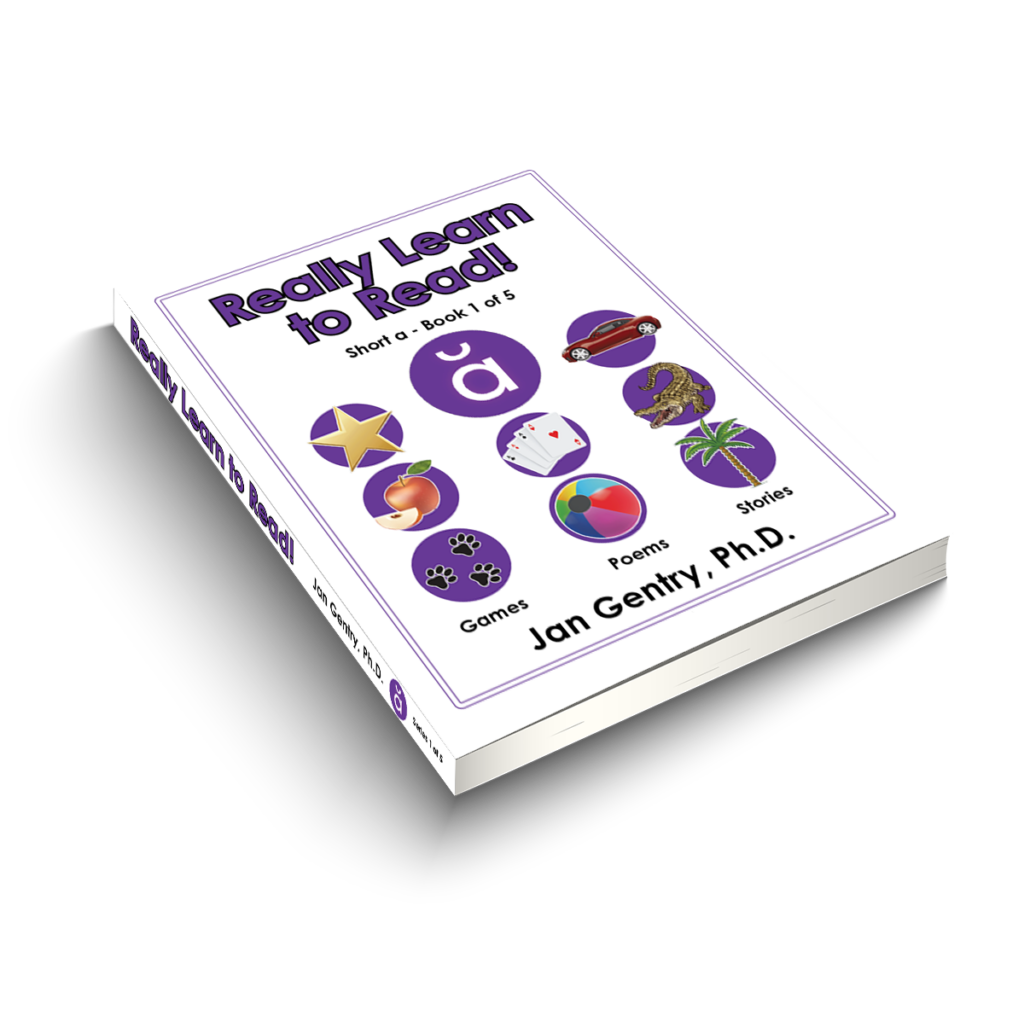
This first book within the Short Vowel Series is designed to instill a love for reading and empower readers as they learn the English language. Short a is composed of a variety of phonics and comprehension lessons specific to children, teenagers, and adults at Grade 1 reading level. With colorful graphics combined with poems and stories, readers are challenged to make short a word families, read these words and new sight words, and apply them in a variety of activity sections. Beginning readers who complete Book 1 have reinforced phonetic awareness skills and practiced essential decoding skills with short a rhyming word families. Self-confidence is gained in understanding what is read through literal comprehension of the facts, main ideas, and information directly stated in the text.
Student Edition
Make Words
At the start of each lesson, readers match and write a variety of beginning sounds (onsets) with common short a vowel pattern endings (rimes) as they determine if the sounds are words. This activity encourages readers to break down words into sounds and discover predictable spelling patterns in rhyming families. Readers become increasingly familiar with the short a phonetic sounds in words, as well as more fluent in pronouncing and spelling words accurately.
Goofy Poems
After making word families, learners read four poems with words from Make Words along with new sight words found in a dotted box. Readers need to instantly recognize sight words without sounding them out to better ensure fluent reading. The poems are humorous and provide valuable practice in decoding the lesson’s words. Additional rhyming words not listed in Make Words are underlined in the poems to help the reader recognize vowel groups, transfer their sounds, and experience reading success.
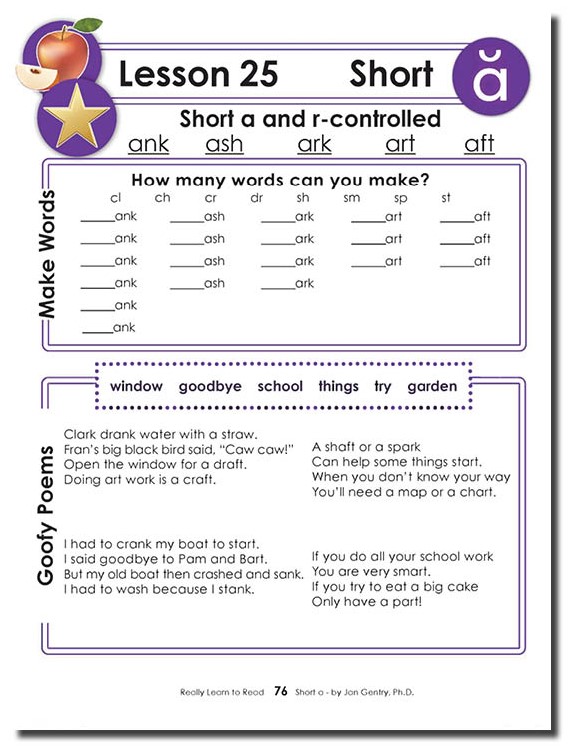
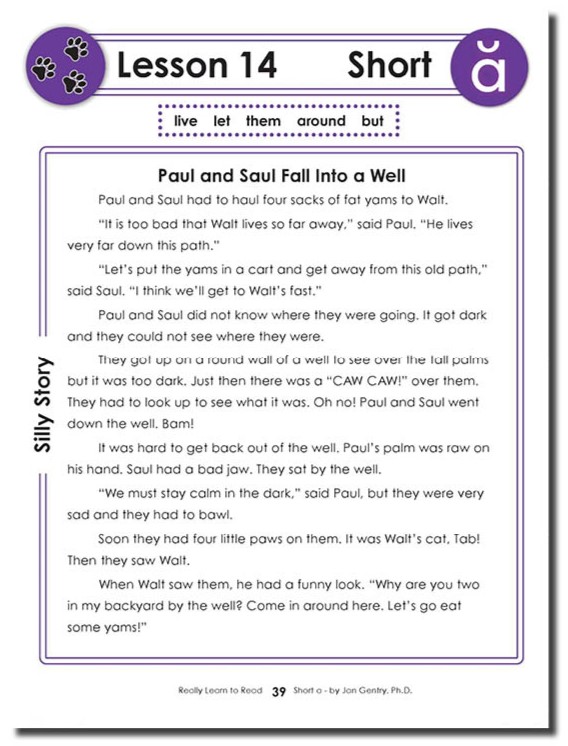
Story
Readers are introduced to new sight words in a dotted box. In the variety of silly stories about animal friends and kids, learners practice phonics skills as they become familiar with word families and sight words. This offers practice and reinforcement opportunities in every lesson to also learn occasional inflected endings, contractions, compound words, cardinal numbers, ordinal numbers, and word symbols. With the help of fun and engaging stories, readers at a Grade 1 reading level are applying letter-sound knowledge, expanding vocabulary skills, and strengthening comprehension skills.
Question & Answer
After every poem and story, readers participate in various types of activities to strengthen the skills they just learned. Activities and questions encourage literal comprehension skills of recalling details, understanding new vocabulary, and finding facts. Readers interact with text as they give answers to questions and activities that often begin with “what, where, when, who, and how.” Self-confidence is built as answers to the questions are always found in the text. The questions and activities also encourage beginning development of comprehending unstated text through making inferences and drawing conclusions. Additional literacy skills include sequencing, classifying, using references, alphabetizing, and applying spelling rules. This activity section motivates readers to understand the text, actively interact with the material, and clearly express their thoughts.
Draw a Picture
After completing the Question & Answer section, a picture box with directions on what to draw provides a fun and colorful activity. It is also a significant exercise, as the reader’s illustrations reflect comprehension of the scenes, characters, or details from the story. Picture box directions also inspire imagination and creativity.
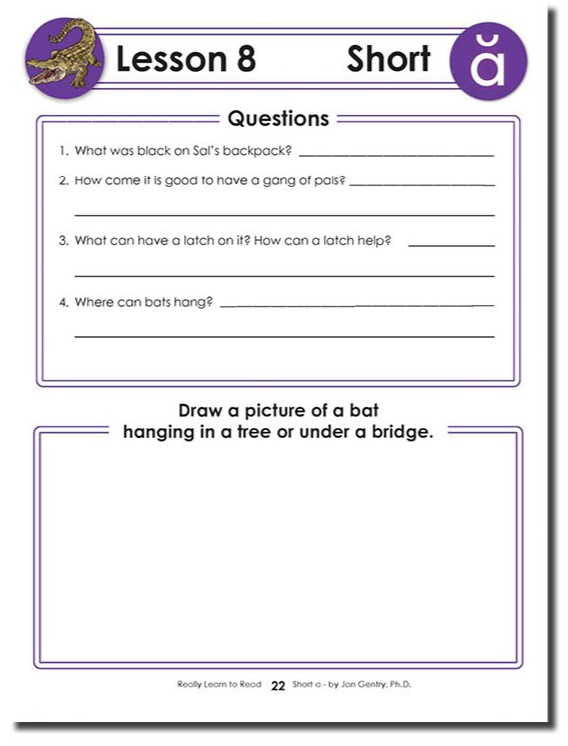
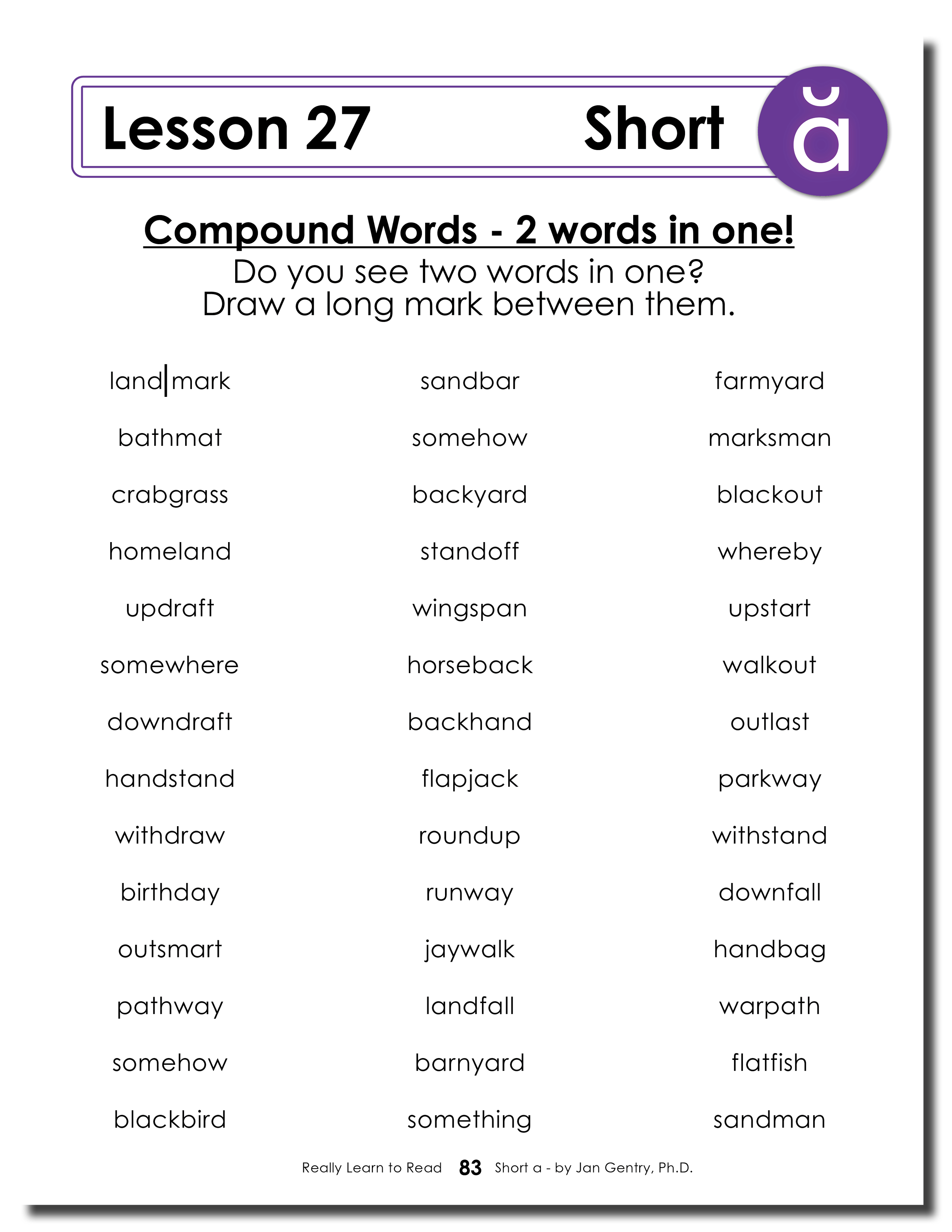
Compound Words
A fun enrichment activity at the end of Short a is recognizing compound words and drawing a line between the two words. When two smaller words are combined, the compound word has a new special meaning! This realization promotes learners on their own to creatively and successfully combine two nouns to form a new compound word. Compound words are especially helpful for vocabulary expansion and language proficiency as learners later encounter longer words to read and spell.
Identifying Antonyms
The final fun reading activity is the matching of opposite word meanings. Knowledge of antonyms helps to develop critical thinking skills, improve comprehension, and expand the reader’s range of vocabulary. Drawing a line from one word to its opposite enhances learners by building background knowledge, determining word associations, grasping multiple word meanings, and reinforcing spelling.
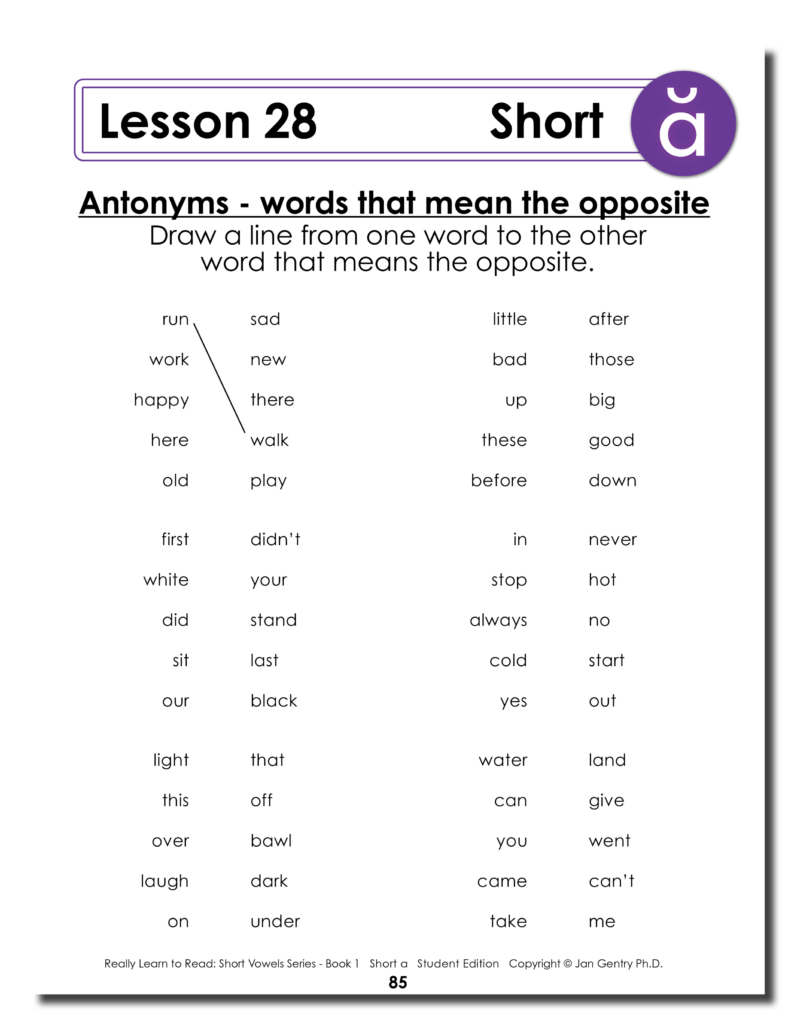
Teacher Edition

In addition to the Short a – Book 1 for the student, the Teacher Edition book includes:
- Answers to questions and activities in each lesson, written in red for easy recognition
- Phonics and Decoding Skills listed in specific detail for each lesson
- Reading Comprehension Skills listed for each question in the poems and stories
- Quick Reference Guide to help quickly target specific areas of attention
This edition provides the reading instructor with a thorough, systematic, well-defined, and successful phonics curriculum.
Answers
The Short a Teacher Edition, identical to the student’s copy, provides easy to read answers in red print for all questions and activities in each lesson. Gauging and evaluating a student’s progress in phonics and decoding, vocabulary, comprehension, and spelling skills are simplified by the program format. The various activity sections facilitate the skill identification of a reader’s strengths and weaknesses. Multiple critical thinking choices, motivating ideas, and creative suggestions are provided for teachers in the lesson activities so that learners of all ages and backgrounds will be inspired and thrive as they Really Learn To Read!
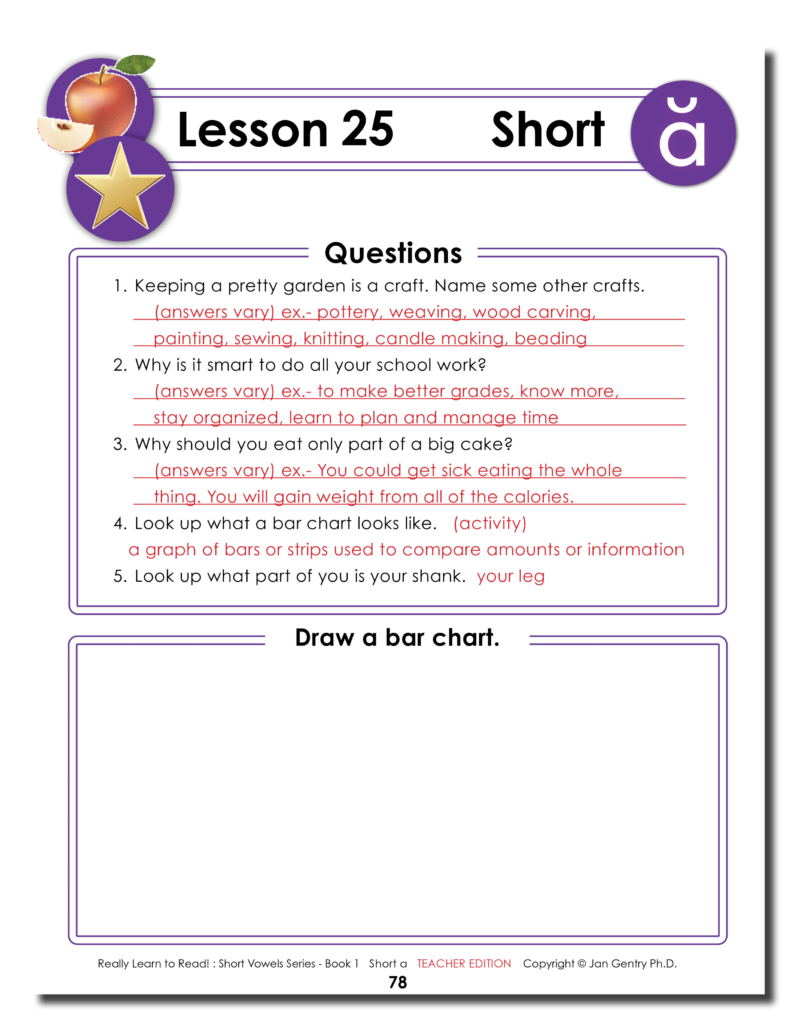
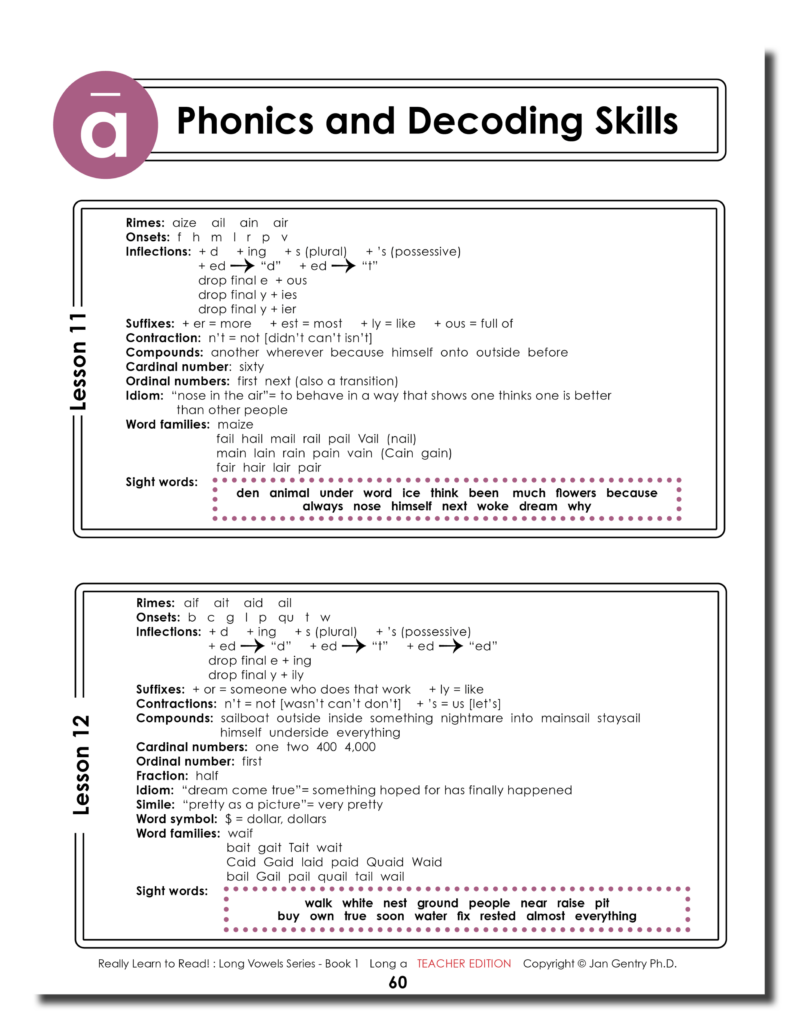
Phonics and Decoding Skills
The Phonics and Decoding Skills section provides teachers with a clear, convenient, and detailed list of all reading and vocabulary skills presented in each lesson: short a word family endings, beginning sounds, inflected endings, contractions, compound words, cardinal and ordinal numbers, word symbols, short a word families, and sight words. This available format gives teachers the advantage to readily determine those skills the learner has mastered or those that need additional review for reading success.
The Reading Comprehension Skills
The Reading Comprehension Skills section is a valuable reference tool that allows teachers to trace each question and activity within a lesson back to its skill objective. Some questions and activities involve details about the story or poem. Others include vocabulary, critical thinking, use of background knowledge and real life application, predicting outcomes, using context clues, and exercising judgment. This simple chart easily allows teachers to monitor the categories of comprehension skills that develop and strengthen as the reader progresses through Short a – Book 1 and, subsequently, through the Short Vowels Series.


Quick Reference Guide
The Quick Reference Guide provides teachers with the quick identification of skills presented in each lesson. A review of skill categories includes rimes and their onsets, inflections, prefixes and suffixes, contractions, compounds, abbreviations, dates and numbers, idioms, and word symbols. Evaluation of literacy progress is convenient and straightforward in this table format.
Order PDF Version
Each book is available individually, or as a set with the other books in the series. The PDF format allows teachers to tailor lessons to their students’ needs by printing specific sections at a time. You’ll be impressed by the progress learners make while having fun mastering the English language.



